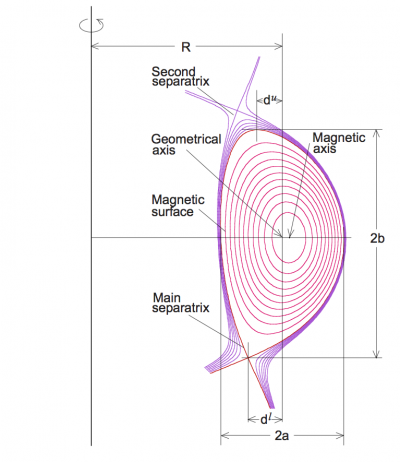Triangularity
The triangularity refers to the shape of the poloidal cross section of the Last Closed Flux surface (LCFS) or separatrix of a tokamak. Assuming:
- R0 is the major radius of the midpoint of the 2 intersections of the LCFS or separatrix with the equatorial plane (Z = 0).
- a is the minor radius of the plasma, defined as the radial difference between the 2 intersections of the LCFS or separatrix with the equatorial plane (Z = 0), divided by 2.
- Rupper is the major radius of the upper X-point (in case it exists) or of the highest vertical point of the LCFS.
- Rlower is the major radius of the lower X-point (in case it exists) or of the lowest vertical point of the LCFS.

The upper triangularity is then defined as follows:
and similar for δlower. The overall triangularity is defined as the mean of δupper and δlower.